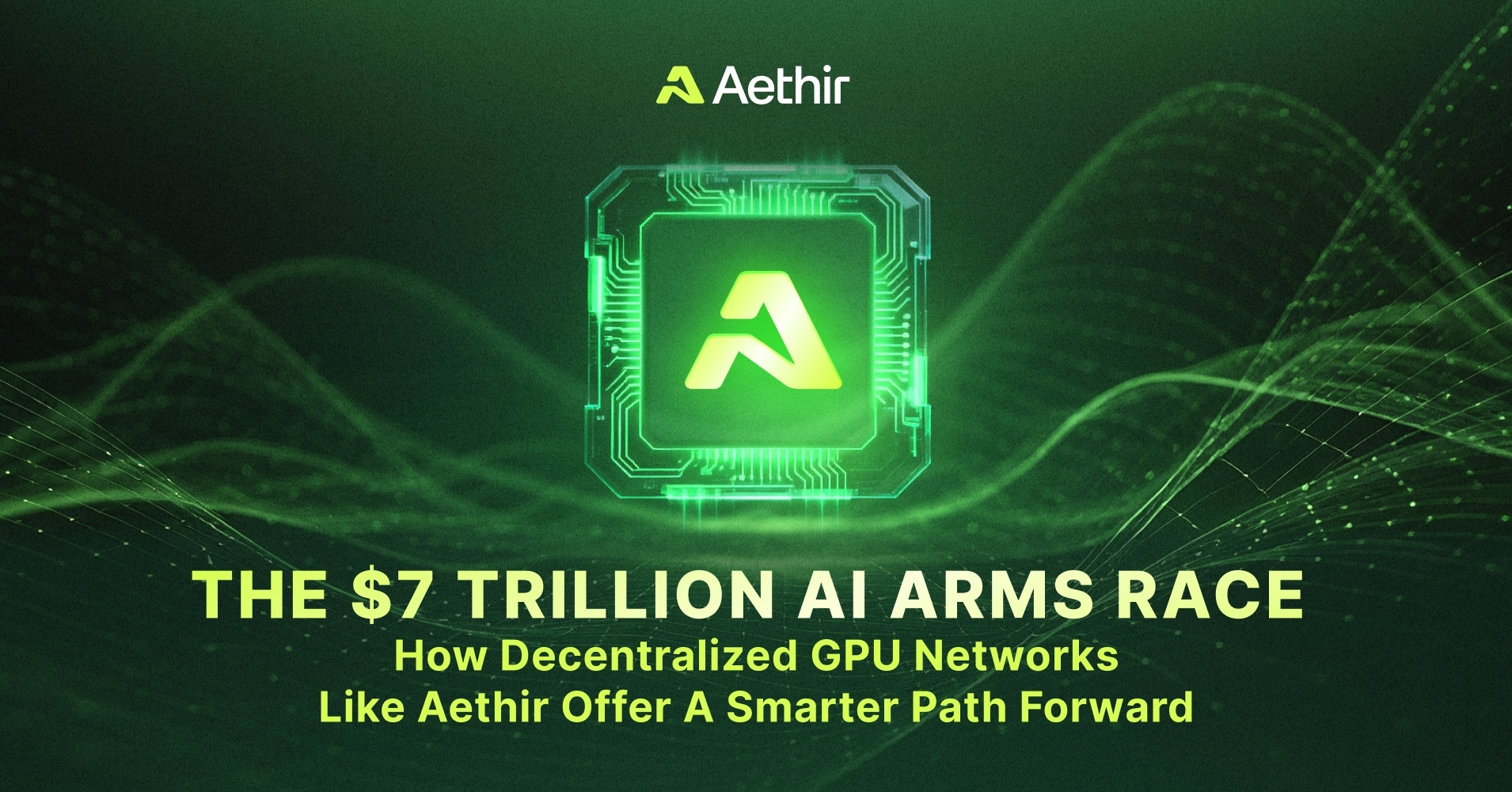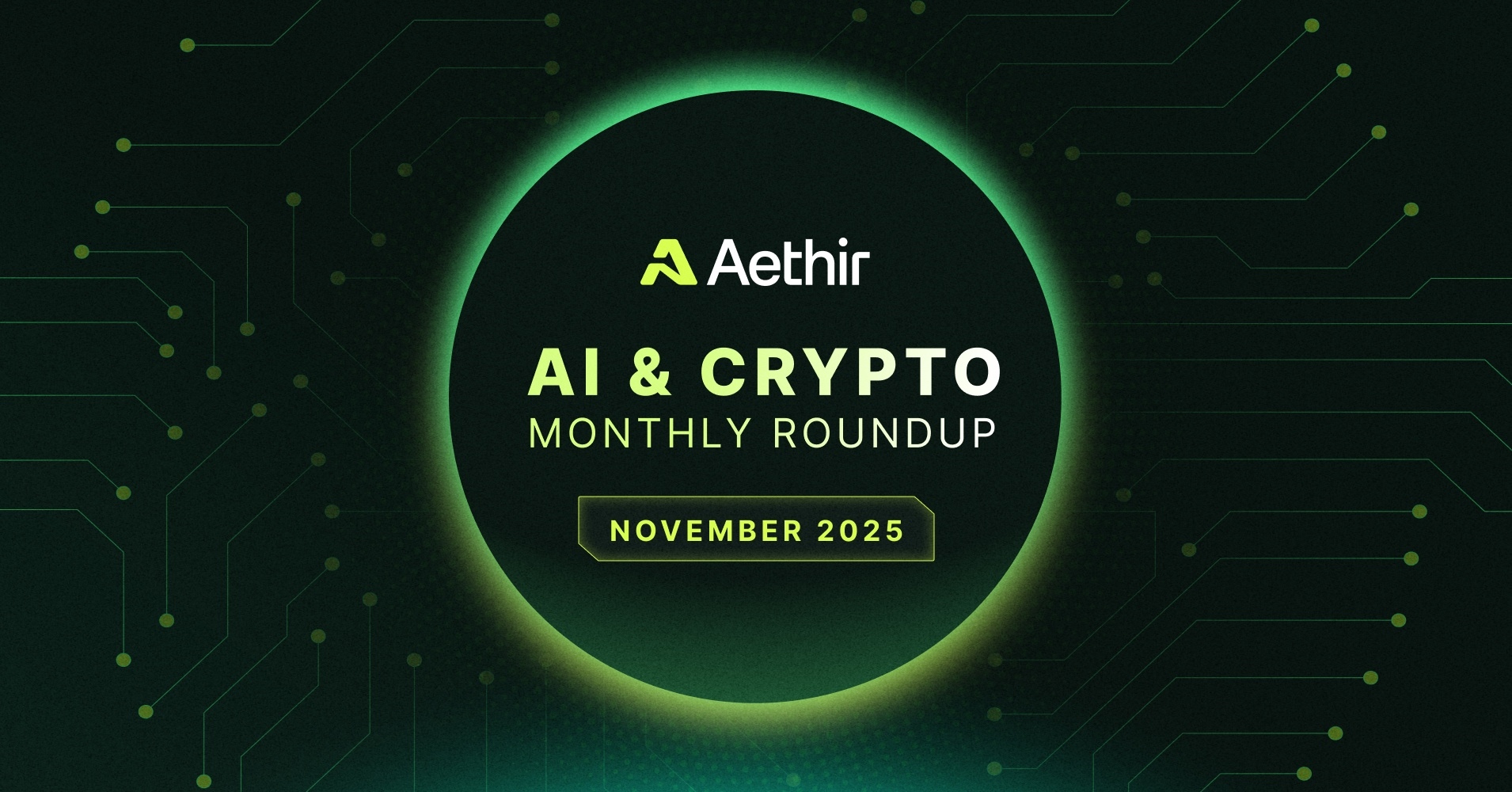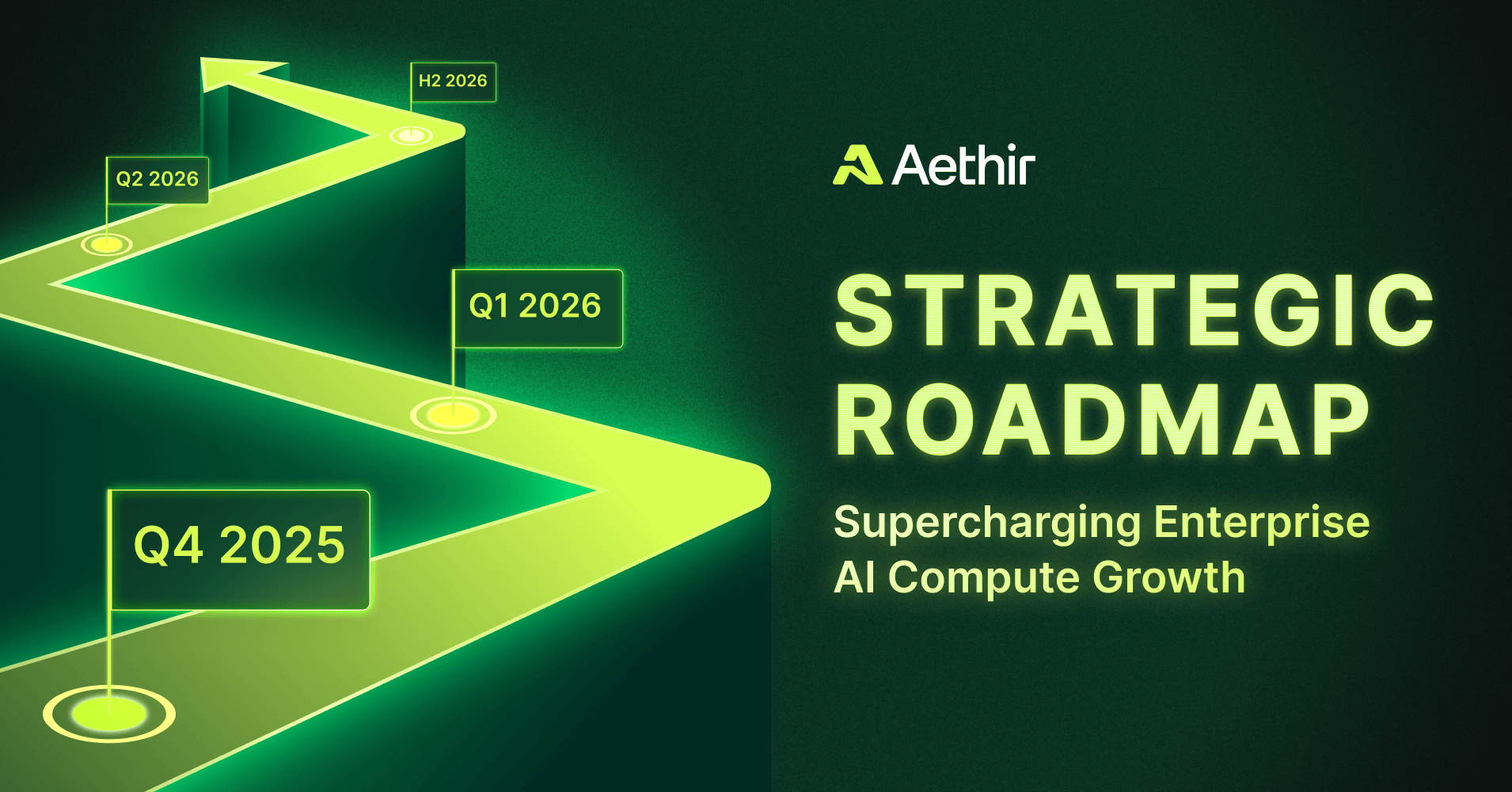Aethir ve Predictive Oncology’nin Dijital Varlık Hazinesi’ni (DAT) keşfedin; dünyanın ilk Stratejik Hesaplama Rezervi olarak, bir sonraki yapay zekâ inovasyonu aşamasını desteklemek için yüksek performanslı premium GPU hesaplama sunuyor.
2010’lar, veri biriktiren ve organize edenleri ödüllendirdi. 2020’ler ise veriyi zekâya dönüştüren, kıt ve gelir getiren bir kaynak olan hesaplama üzerinde kontrol sahibi olanları ödüllendirecek. Yapay zekâ pilot projelerden üretim aşamasına geçtikçe, hesaplama kapasitesi temel altyapı hâline geliyor.
Bu makale, neden hesaplamanın döngünün yatırım yapılabilir varlığı olduğunu, dağıtık fiziksel altyapının (DePIN) ölçekte arzı nasıl açığa çıkardığını ve Aethir’in Dijital Varlık Hazinesi’nin (DAT) Predictive Oncology aracılığıyla işletilen kurumsal yatırımcıya doğrulanabilir, getiri sağlayan hesaplamaya nasıl erişim sunduğunu açıklıyor.
Pazar Sürücüleri: Seküler Büyüme ile Kalıcı Kıtlığın Buluşması
IDC, dünya çapında yapay zekâ harcamalarının 2025’te 307 milyar dolardan 2028’de 632 milyar dolara ulaşacağını öngörüyor (IDC Harcama Kılavuzu), Computerworld’deki örtüşen raporlarla destekleniyor.
Capex süper döngüsü ve enerji kısıtları, çoklu GW’lık yapay zekâ veri merkezi planları ve McKinsey, Reuters (Stargate inşası) ve Deloitte analizlerinde açıkça görülüyor.
Kıt hesaplamanın toplumsal maliyeti, Sam Altman tarafından da vurgulanıyor; yeterli altyapı olmadan yapay zekânın yalnızca bir avuç kişi için bir araç hâline geleceğini belirtiyor.
Yapay zekâ, çoğu sektörü geliştiriyor ve verimliliği, ölçeklenebilirliği ve üretkenliği artırmanın yeni yollarını sunuyor; bu da hayatı değiştiren inovasyonlarla sonuçlanıyor. Ancak sınırsız ölçeklenebilirlik için büyük GPU hesaplama kaynakları gerekiyor.
Sadece NVIDIA H100, H200 ve GB200 gibi yüksek performanslı GPU’lar, yapay zekâ çıkarımı, model eğitimi ve yapay zekâ robotik uygulamaları da dahil olmak üzere en gelişmiş yapay zekâ iş yüklerini etkin şekilde destekleyebilir. Ne yazık ki, GPU erişilebilirliği darboğazı, birçok işletmenin yapay zekâyı entegre etmesini ve operasyonlarını ölçeklendirmesini engelliyor.
Merkezi Problem: Erişim Zorlukları ve Şişirilmiş Maliyetler
Bulut bilişim sektörü, bölgesel merkezlerde yer alan hiperskalör veri merkezlerini kullanan merkezi GPU sağlayıcılar tarafından domine ediliyor. AWS veya Google Cloud gibi geleneksel bulut sağlayıcıları, tüm müşterilerine devasa veri merkezlerinden hizmet sunuyor; bu merkezler sınırlı ölçeklenebilirliğe ve veri merkezi bakım ücretleri ile gizli maliyetlerden dolayı yüksek maliyetlere sahip. Bu durum, yüksek performanslı hesaplama için gereksiz şekilde yüksek ücret ödemek zorunda kalan hesaplama müşterileri için aşırı fiyatlandırılmış GPU giderlerine yol açıyor.
Hiperskale bulutlardaki yoğunlaşma, tahsis kuyruklarına, şeffaf olmayan tedarike ve çıkış ücreti kilitlenmesine yol açıyor. Vaka çalışmaları, iş yükleri merkezi olmayan GPU kapasitesine taşındığında toplam maliyetin yaklaşık %40–80 oranında düşürülebileceğini gösteriyor.
Aethir’in merkezi olmayan GPU bulutu, H100 gibi son teknoloji GPU’lar için merkezi bulut sağlayıcılarına kıyasla %86’ya kadar daha düşük ücret talep ediyor.
DePIN Çözümü: Dağıtık Hesaplama, Küresel Kamu Malı ve Yatırım Yapılabilir Bir Varlık Sınıfı
Aethir’in DePIN yığını, küresel ölçekte dağıtık GPU’ları, doğrulanabilir performans ile politika odaklı bir pazarda koordine ediyor:
- Heterojen donanım (H100/H200, B200/GB200) üzerinden arzın toplanması ve yönlendirilmesi, net operasyonel kontroller (Operasyonel Gereksinimler) ile yönetiliyor.
- SLA ve SLO’ların stake destekli uygulanması ile kalite güvencesi sağlanıyor.
- Bölgesel fiyat keşfi ve iş yükü farkındalığıyla programlama yapan verimli pazarlar, kullanım oranını artırıyor ve inference başına veya GPU-saati başına maliyeti düşürüyor.
Ağ, 91.000’den fazla Checker Node ile güvence altına alınmış ve izleniyor; her zaman optimal hizmet kalitesi sağlanıyor.
Hesaplama kaynakları, Aethir’in 150’den fazla ortağı ve müşterisini destekleyen bağımsız Bulut Sağlayıcıları tarafından topluluk mülkiyetinde ve işletiliyor ve ATH kazanıyorlar.
Kurumsal Açılım: Menkul Kıymetleştirilmiş, Stake Edilmiş ve Getiri Sağlayan
Hesaplama, kurumsal tahsisçiler tarafından tercih edilen özellikler sergiliyor: sözleşmeye bağlanabilir talep, gözlemlenebilir performans, çeşitlendirilmiş risk ve net yapı. Performans ve gelir gözlemlenebilirliği, Aethir GPU Gösterge Tablosu üzerinden canlı telemetri ile destekleniyor. Kapasite menkul kıymetleştirilebilir, stake edilebilir ve getiri sağlayabilir.
Vaka Çalışmaları: Aethir — Ölçek, Gelir ve Doğrulanmış İş Yükleri
Canlı ağ telemetrisi, Talep ve Arz metrikleri dahil olmak üzere Aethir GPU Gösterge Tablosu üzerinden erişilebilir.
Ölçek ve kapsama alanı, AI çıkarımı, 3D ve gerçek zamanlı render ve etkileşimli akış hizmeti veren kurumsal düzeyde dağıtımlar ile 93 ülkede ve 200’den fazla lokasyonda 435.000’den fazla GPU konteynerini içeriyor. TensorOpera, DCENT, Raiinmaker, Inferium, OpenLedger ve birçok diğer AI yenilikçisi, Aethir’in merkezi olmayan GPU bulutunu kullanarak AI operasyonlarını geliştirdi.
Kapasite Eşdeğerliliği (Örnekleme)
Tamamen ayrılmış olsaydı, Aethir’in toplam hesaplama kapasitesi GPT‑3 ölçeğinde bir modeli aylar yerine günler içinde eğitebilirdi.
Kitlesel pazar inference’ı için, karmaşık bir üretici sorgu başına konservatif 125 GFLOP kullanılarak yaklaşık 1,1 trilyon inference/saat (yaklaşık 26,4 trilyon/gün) elde edilebilir; bu, kullanıcı başına günde 100 sorgu ile yaklaşık 264 milyon günlük kullanıcıya yeterlidir. Canlı kapasite ve kullanım için Aethir Dashboard’a ve daha geniş bağlam için IFP tartışmasına bakınız.
Predictive Oncology Üzerinden Aethir’in DAT’ı: Stratejik Hesaplama Rezervine Kurumsal Erişim
Predictive Oncology, Aethir’in Dijital Varlık Hazinesi’ni (DAT) Stratejik Hesaplama Rezervi olarak işletiyor; kurumsal düzeyde GPU altyapısını Web2 ve Web3 çapında toplayan, dağıtan ve gelir elde eden aktif bir araç. Gerçek iş yüklerinden elde edilen gelirler kapasiteyi artırmak ve ATH üzerinden teşvikleri hizalamak için yeniden yatırım yapılıyor.
- Varlık tabanı: Operasyonel Gereksinimler altında belgelenmiş kontrollerle Cloud Host’lar aracılığıyla entegre edilen kurumsal düzeyde H100, H200, B200 ve GB200 GPU’lar.
- Gelir elde etme: Çift Web2 ve Web3 talebi (eğitim, inference, render, akış) ve kanıtlanmış maliyet/performans.
- Stake destekli güvenilirlik: Sağlayıcılar ATH teminatı yatırır; kesme ve cezalar çalışma süresi ve kaliteyi garanti eder.
- Raporlama: Kurumsal düzeyde açıklamalar, canlı Aethir Dashboard’a referans verir.
- Neden şimdi: Trilyonlarca dolarlık AI inşası ve enerji kısıtları, uygulanabilir SLA’lar altında teslim edilebilir TFLOP’lar için kalıcı marjlar yaratıyor.
Hesaplama, Yapay Zekâ Ekonomisinin Temelidir
DePIN, küresel, heterojen donanımı programlanabilir, denetlenebilir ve getiri sağlayan bir altyapı katmanına dönüştürüyor. Exa‑ölçek kapasite, artan yıllık yinelenen gelir ve üretim iş yükleri ile Aethir’in ağ telemetrisi ve Predictive Oncology’nin DAT’ı, hesaplama ekonomisine kurumsal düzeyde bir yol sağlıyor.






